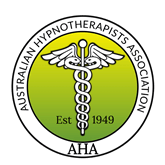The Tapping Solution by Nick Ortner
Book review by Hollie Booth
Nick Ortner’s The Tapping Solution presents Emotional Freedom Technique (EFT) as a practical, evidence-based method for alleviating stress, anxiety, and emotional trauma. Grounded in both modern psychology and traditional Chinese medicine, EFT combines cognitive reframing with acupressure by stimulating specific meridian points through tapping while verbalising thoughts and emotions. This process allows the body to regulate its stress response, breaking cycles of emotional distress and limiting beliefs.
Ortner outlines the physiological mechanisms behind EFT, explaining how tapping sends calming signals to the amygdala, the brain’s stress centre, reducing cortisol levels and promoting emotional resilience. Through personal stories and case studies, he demonstrates how EFT has been successfully applied to chronic pain, phobias, weight loss, financial stress, and even PTSD. The book provides a step-by-step guide to the technique, emphasising the importance of identifying core emotional issues and using personalised statements to reframe them.
A key theme in The Tapping Solution is the connection between unresolved emotional trauma and physical health. Ortner argues that negative emotions become trapped in the body, manifesting as illness or chronic conditions. By addressing these emotional blockages, EFT can support long-term healing. He also explores the role of subconscious programming, illustrating how childhood experiences shape adult behaviour and how tapping can help shift deeply ingrained patterns.
Ortner encourages a systematic approach to integrating EFT into daily life, recommending that individuals track their progress and refine their tapping scripts to target specific concerns. He supports his claims with emerging research and testimonials from those who have experienced profound transformations. The book positions EFT as an accessible, self-empowering tool for emotional well-being, offering a structured yet adaptable method for personal growth.
While some may question its scientific foundation, The Tapping Solution presents a compelling argument for EFT as an effective mind-body intervention. Ortner’s practical guidance makes it easy for readers to apply tapping in their own lives, offering a pathway to emotional and physical relief. His approach is both compassionate and pragmatic, making a strong case for EFT’s inclusion in holistic therapeutic practices.
Beyond individual transformation, Ortner highlights EFT’s potential in professional therapeutic settings, advocating for its integration alongside conventional treatments. He discusses how therapists, coaches, and medical practitioners are increasingly recognising its value in addressing trauma, addiction, and performance anxiety. Additionally, he delves into the science behind energy psychology, citing studies that support the efficacy of tapping in reducing stress-related disorders and improving mental clarity.
Ultimately, The Tapping Solution is a call to action for those seeking lasting emotional and physical relief. By embracing EFT, individuals can unlock their body’s innate healing capacity,
fostering resilience and well-being. Ortner’s accessible style and real-life success stories make this book a valuable resource for anyone looking to incorporate holistic healing techniques into their personal or professional practice.


